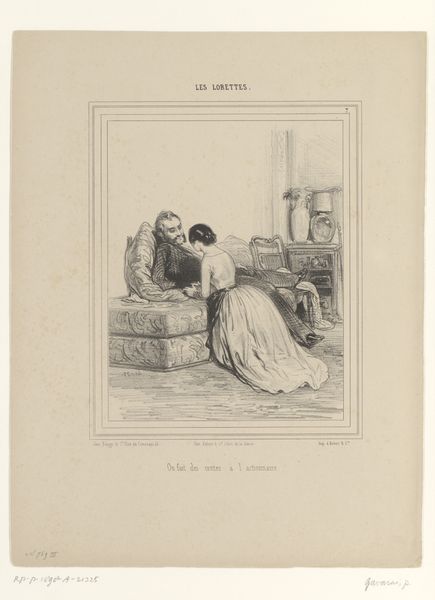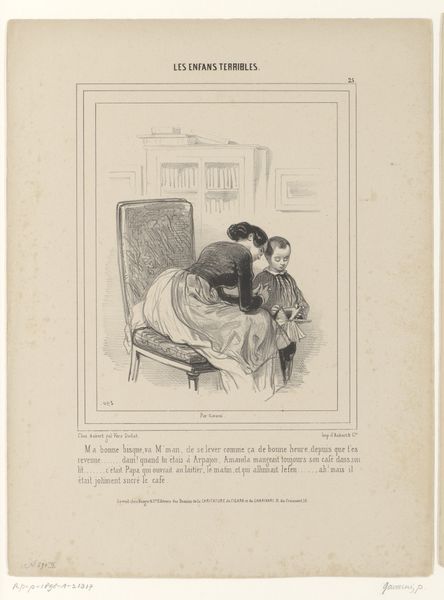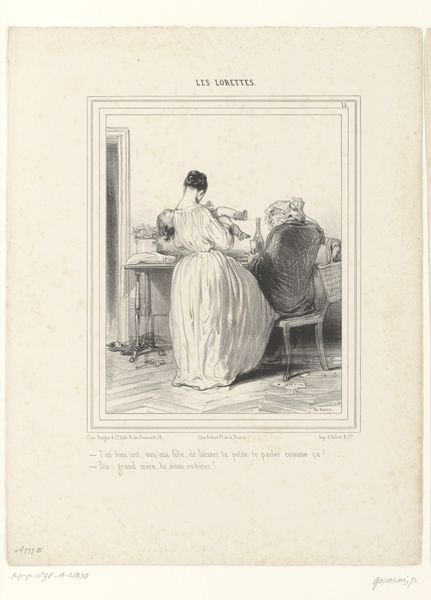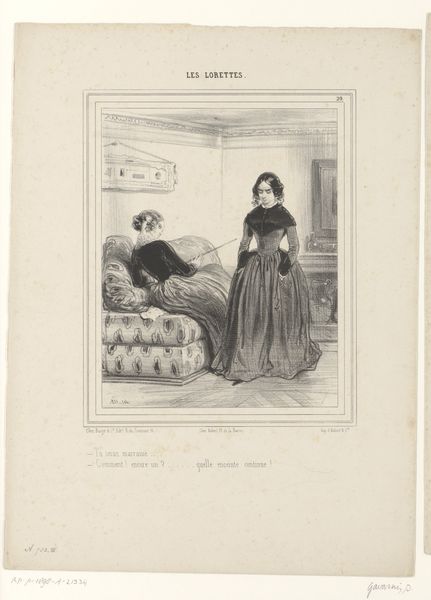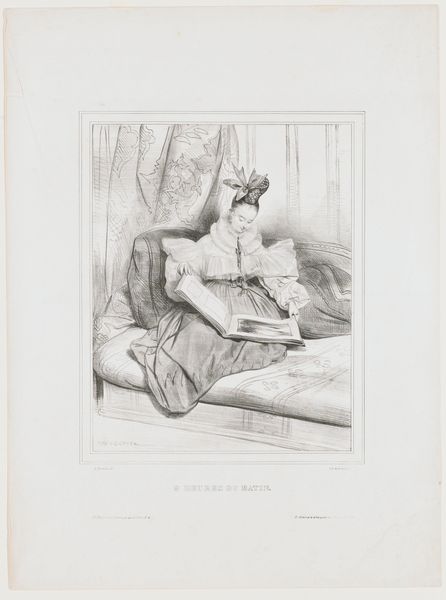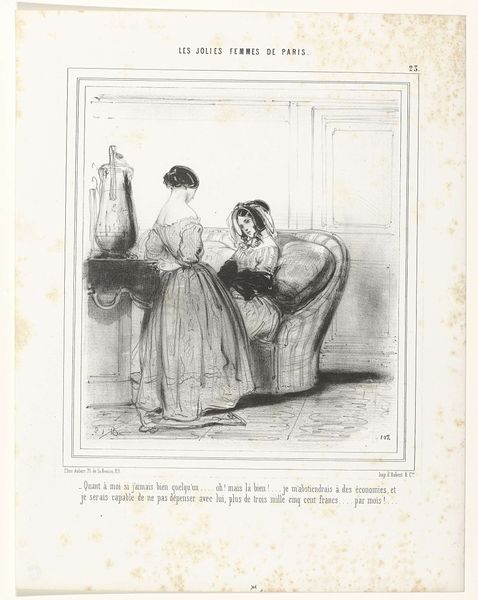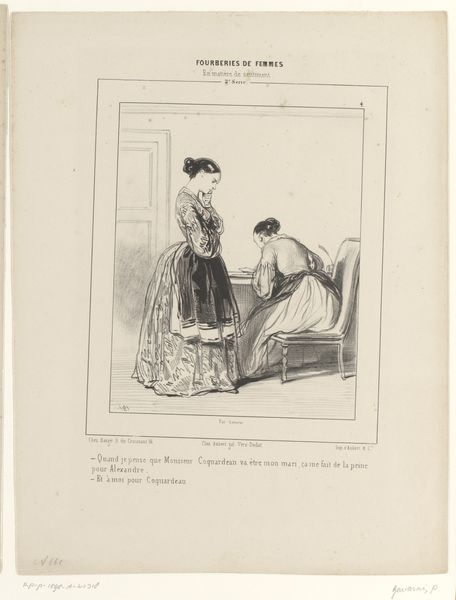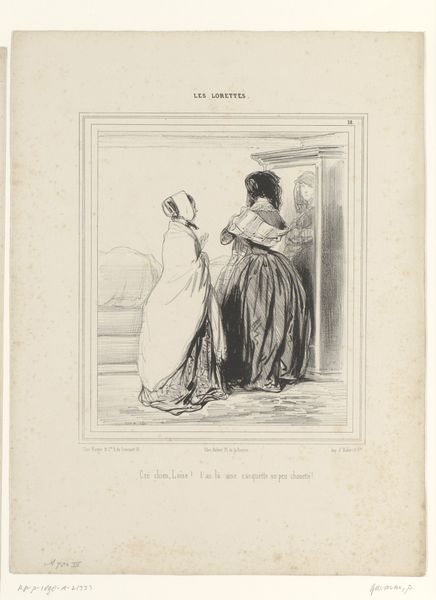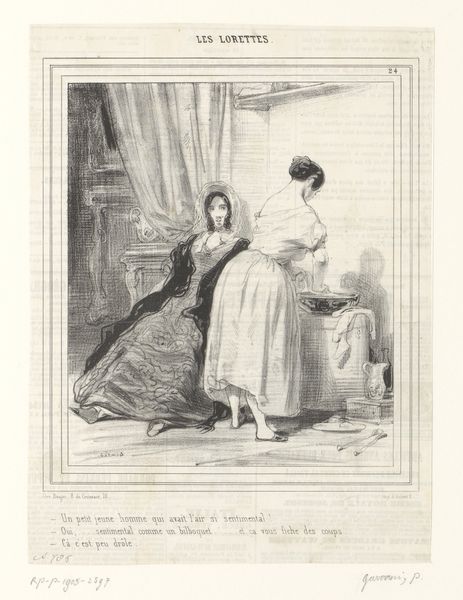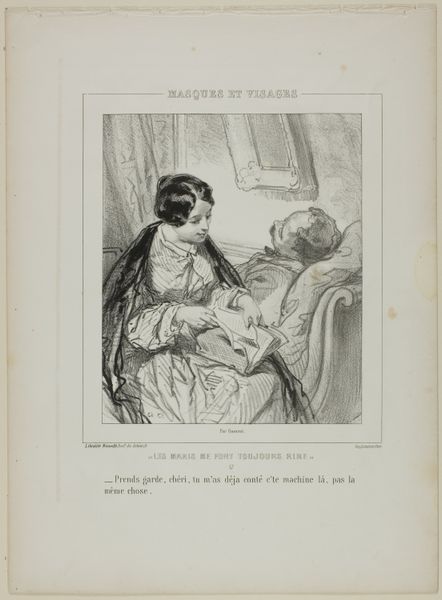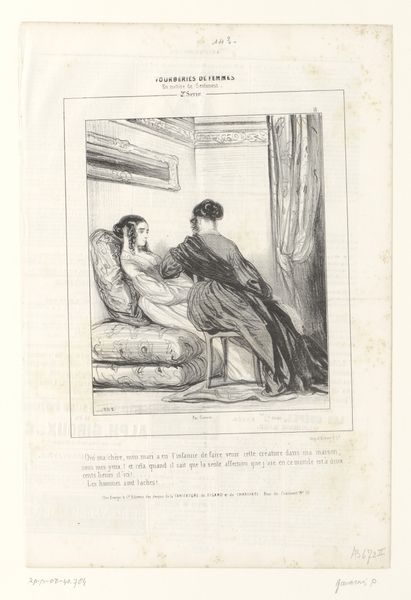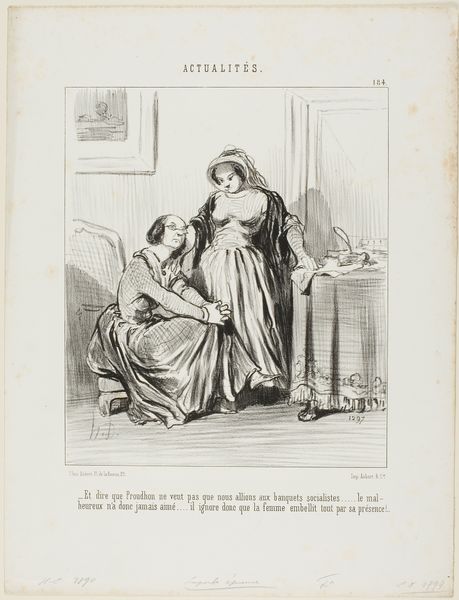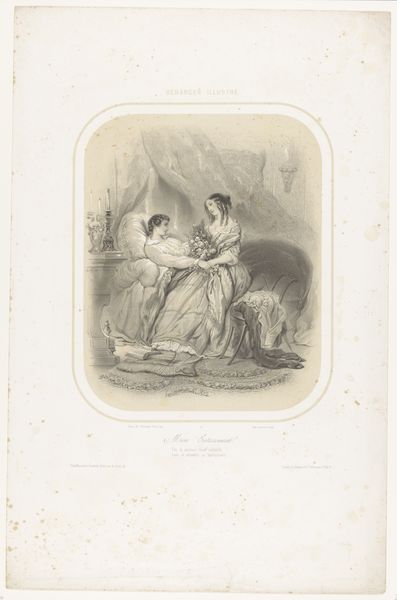
drawing, lithograph, print, pen
#
portrait
#
drawing
#
narrative-art
#
lithograph
# print
#
pencil sketch
#
figuration
#
romanticism
#
pen-ink sketch
#
sketchbook drawing
#
pen
#
genre-painting
Dimensions: height 358 mm, width 277 mm
Copyright: Rijks Museum: Open Domain
Editor: Here we have "Two Women with Mushrooms" by Paul Gavarni, a lithograph from 1841. The print shows two women indoors, one appearing to examine mushrooms while the other looks out the window. There's a kind of anxious energy in the piece, like they're trapped inside. How do you interpret this work? Curator: That sense of being trapped is a crucial element, especially when viewed through the lens of 19th-century Parisian society. Gavarni was known for his social commentary, and this work, part of a series on "Les Lorettes", speaks volumes about the limited roles and economic precarity faced by many women at the time. Who were these lorettes and how did society perceive them? Editor: From what I recall, the lorettes were working-class women, often mistresses, but not quite prostitutes. Their position in society was quite ambiguous. Curator: Exactly! This ambiguity is key. The mushrooms, often associated with hidden dangers or, conversely, nourishment, serve as a potent symbol for the women's precarious existence. One is focused on this immediate need while the other yearns for something outside. The window becomes a boundary, emphasizing both the possibility and the impossibility of escape from social constraints. How do the poses contribute to this sense of social constraint? Editor: The woman at the window almost seems to be pleading, and the one with the mushrooms is closed in on herself, perhaps resigned. Curator: Precisely. The print cleverly depicts not just a scene, but a snapshot of a societal structure that confined women through economic dependence and social expectations. Did you notice the inscription underneath the drawing? Editor: Yes! “One cannot say that she’s eating mushrooms… my love it’s the only recourse there is”. Curator: Very good! We gain valuable insight into their state of mind. Editor: I never would have considered the broader social implications just from looking at the work initially. Thinking about it in this way has completely changed my understanding. Curator: Exactly, situating this artwork within the intricate social context in which it was created enhances its profound meaning.
Comments
No comments
Be the first to comment and join the conversation on the ultimate creative platform.
